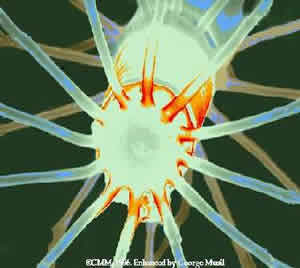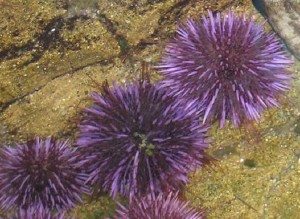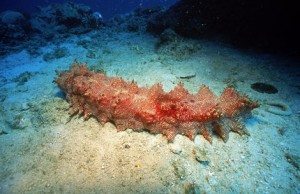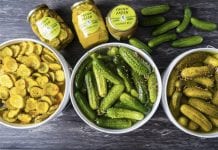 By: Molly Rovero, LuxEco Editorial Assistant
By: Molly Rovero, LuxEco Editorial Assistant
For the majority of the time that the BP oil spill has been happening, company officials as well as others, including Jane Lubchenco of the National Oceanic and Atmospheric Administration, have been saying that oil under the water’s surface is not an issue of concern. Recently, however, teams of scientific researchers have been finding evidence contrary to this. Oil under the surface is a world of unknowns for scientists. How it affects marine life is one of the biggest questions that people are grouping together to try and understand. Answers do not come easily and for many topics, the reality is that we simply just don’t know. The smallest marine life forms could be in grave danger and results of their depletion could be devastating as their presence in the gulf is crucial to the whole ecosystem.
What happens when the bottom of the food web gets taken out?
 Many marine organisms rely on the bottom in some way or another, directly or indirectly. We may not be able to see effects right now because organisms like plankton are so small. Eventually, the impact of these effects will be visible through animals like dolphins and wales. The deaths of these animals will not be as evident as those seen on the surface where oil has smothered them. Whole populations could be effected, not just those directly coming in contact with the oil. A chain reaction is started when the smallest levels of organisms are depleted. In the world of science this is called the “negative bottom-up effect”.
Many marine organisms rely on the bottom in some way or another, directly or indirectly. We may not be able to see effects right now because organisms like plankton are so small. Eventually, the impact of these effects will be visible through animals like dolphins and wales. The deaths of these animals will not be as evident as those seen on the surface where oil has smothered them. Whole populations could be effected, not just those directly coming in contact with the oil. A chain reaction is started when the smallest levels of organisms are depleted. In the world of science this is called the “negative bottom-up effect”.
This negative bottom-up effect has been seen before in places like Peru. For thousands of years the people of Peru, and those who previously inhabited it, harvested bird guano to use for fertilizer. These birds would eat anchovies who eat the plankton to survive. Weather conditions such as El Nino force plankton into cooler waters where anchovies will follow, leaving the birds with little or nothing to eat. This phenomenon along with radical harvesting of anchovies for human consumption severely diminished the population of the guano producing birds from 25 million to 4 million. Similar results of fauna populations could occur in the gulf if plankton populations decrease drastically.
Even the smallest change can have a widely negative impact. Researches have already spent countless hours to figure out what these might be but the scientific process takes time. Samples are collected, experiments executed and tracking goes on continually. Oil plumes under the surface have already been discovered by Dr. Samantha Joyce, from the University of Georgia, and her team of researchers. These plumes have cloud like properties and are hanging in the water column. Their effects are currently unknown so researchers are trying to find out what these plumes contain and how they might effect the dynamics of sea life. Even with little knowledge there are some certainties about the plumes: They remain undetectable by marine life and they are continuously moving through the underwater currents, which will eventually end up on shore lines and possibly the ocean floor.
So far Dr. Joyce and her team have discovered methane in these plumes along with the oil. Methane is being released into the water at the source of the leak. Organisms have existed with minimal contact to the oil and gas that is naturally released from the sea floor, but the effects of larger quantities could be major. John Kessler of Texas A&M along with a team of scientists embarked on a journey to study the methane being released into the gulf. Like the oil, the effects of methane in the water is still very unclear. In his blog, Kessler writes that methane is “a possible contributor to the loss of dissolved oxygen from the Gulf waters.” Lack of oxygen in the water poses a serious risk to marine life as the majority of organisms rely on it. Suffocation and death will results from extended periods of low oxygen supply.
 It is undoubtedly sad to see dolphins, fish, and other sea creatures suffocating in the oil, but undersea life we can’t always see is also being effected. Kessler and his team have already reported thousands of sea cucumbers, a bottom dwelling creature, dead on the surface of the water . It is still uncertain the cause of death for these sea cucumbers, but likely a result of the spill because it has only been seen since the start of it. Aside from sea cucumbers, thousands of other organisms dwell in and around ocean floor sediments, many of which have yet to be documented scientifically.
It is undoubtedly sad to see dolphins, fish, and other sea creatures suffocating in the oil, but undersea life we can’t always see is also being effected. Kessler and his team have already reported thousands of sea cucumbers, a bottom dwelling creature, dead on the surface of the water . It is still uncertain the cause of death for these sea cucumbers, but likely a result of the spill because it has only been seen since the start of it. Aside from sea cucumbers, thousands of other organisms dwell in and around ocean floor sediments, many of which have yet to be documented scientifically.
We can physically see affects of the oil spill on marine life already, but what will happen in the future is still speculative. “There could be significant loss of marine life, from the bottom of the food web right up to the very top. There could be significant loss of habitat and life in coastal and estuarine ecosystems, in surface water oceanic ecosystems, in mid-water ecosystems, and in ocean bottom ecosystems both on the continental shelf and in the deep-sea,” says Dr. Jeffrey Baguley, a Marine Biology instructor at the University of Nevada. He believes that extinction is not a risk for economically important species, but death in local populations is a significant possibility. This has the potential for serious economic impact if occurring in areas used by the fishing industry, which has already been drastically effected by the spill. If we watch and wait for the future to happen it will already be too late. The time to act is now because damage already done may be irreversible. Clean up efforts need to become greater, in areas where possible, such as locations where oil has washed up onto the beach. It is also important that we who care for the environment make a stand. It is essential that the subsurface eco systems become more of a concern before the spill has time to form more extensive damage.













